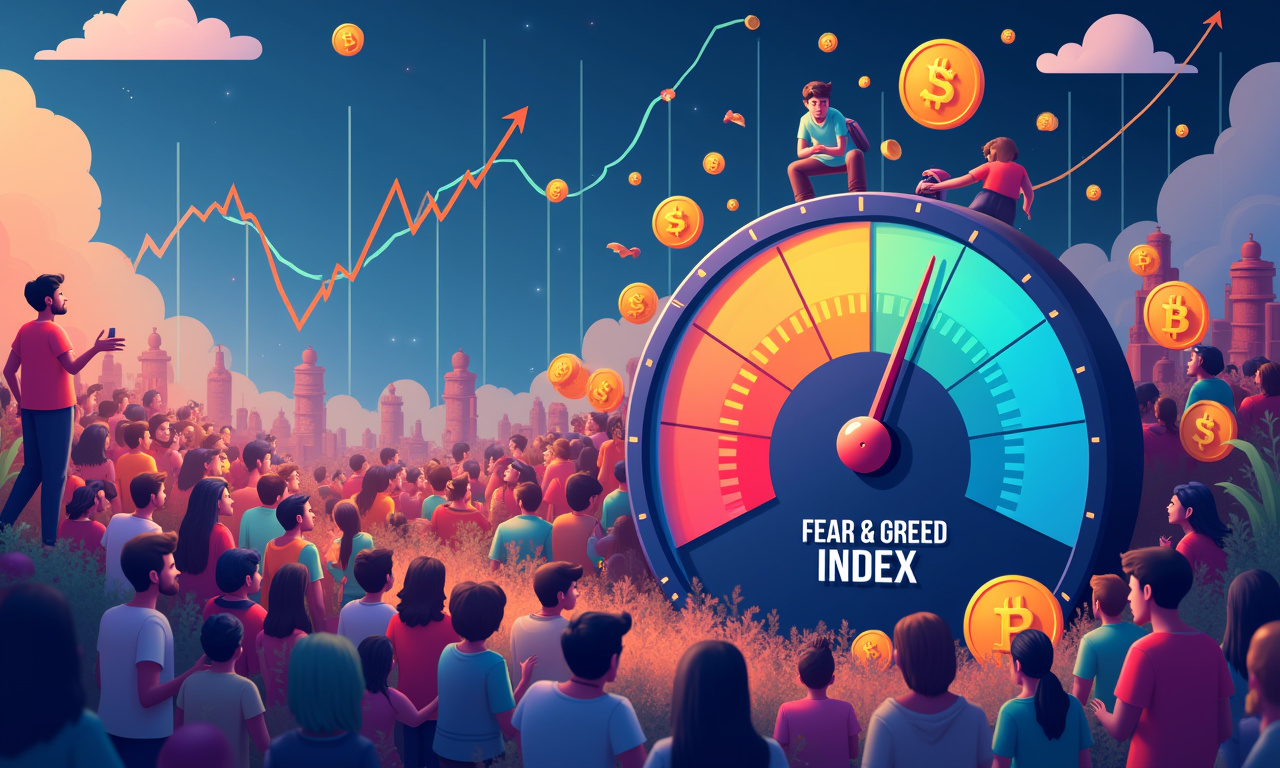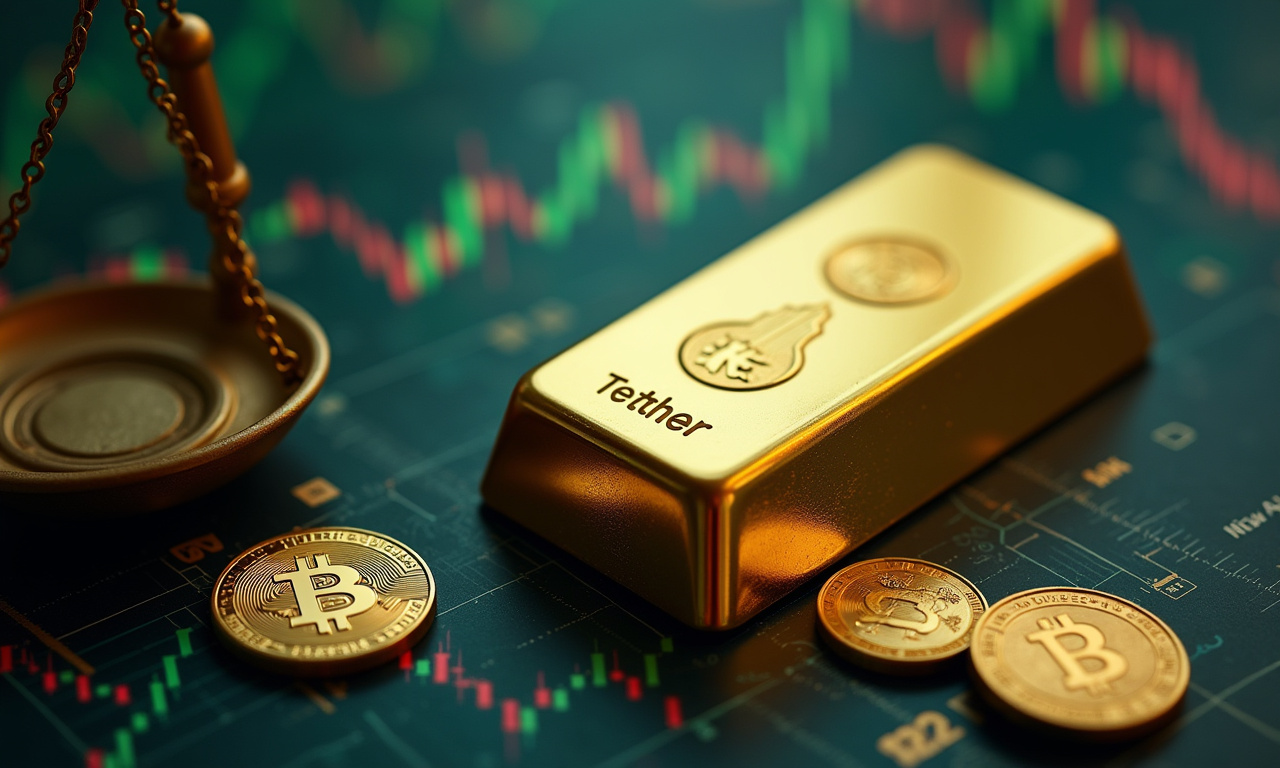Is Crypto's Fear & Greed Index Just Mass Hysteria in Numbers?

The Crypto Fear & Greed Index. Sounds sophisticated, doesn't it? Like an enchanted Wall Street incantation, a magic formula to unleash unprecedented wealth. But let's be real: is it actually a reliable indicator, or just a numerical representation of the crypto market's collective anxiety and euphoria – mass hysteria masquerading as data?
Does The Index Predict Or Reflect?
The index aggregates data points including volatility, social media discussion, and Google search trends. It then uses the analysis to produce a score on a scale of 0 to 100. Zero is equivalent to “panic selling,” 100 an instance of “irrational exuberance.” The question is whether it can predict these emotional states, or if it just shows them. I'd argue it's the latter. It is not a villain creating the chaos—it’s a funhouse mirror reflecting back our own faces, warped by fear and greed.
Imagine a flock of birds. For various reasons, one bird suddenly decides to take off. The others soon fall in line, not from an inherited reflex to avoid peril, but because they witness their fellow fish in panic mode. The Fear & Greed Index is nothing more than a legal version of watching that flock. It might show, like a radar, that birds are moving, but it doesn’t answer the question of why they’re moving. Maybe there's a predator. Or perhaps it’s simply a heavy draft from an open window. The index doesn't differentiate.
As an investor, I’d highly recommend avoiding it. I’ve personally watched friends, very smart, able people make singular investment declarations based exclusively on this index. It’s giving off maximum fear,” they’d argue, “time to buy! Or, “Greed is the highest it’s ever been, time to dump. Some got lucky. Many didn't. They outsourced their judgment and due diligence to an arbitrary, moving number, and that’s a risky gamble.
The Echo Chamber Of Crypto Sentiment
The index itself becomes a self-fulfilling prophecy. Then when it flashes “extreme fear,” anxious investors panic and sell their stocks, which pushes prices down further and confirms the index’s first reading. It’s an echo chamber of sentiment, amplifying the very emotions it purports to assess.
The Milgram obedience experiment immediately flashes in our minds. In it, subjects are asked to deliver electric shocks to people they believe are in pain, simply because an authority figure told them to. The index is the principal in the crypto schoolyard. It pushes us—often in ways we don’t realize, or at least don’t notice completely—to act unreasonably.
The issue with that is, crypto is already volatile as is. We surely don’t want a new metric that increases the amplitude of those swings. We need tools that incentivize sober analysis, prudent due diligence and a long-term horizon. Not a glorified mood ring for investors.
Financial Literacy Is The Real Key
The crypto market is one of the most risky markets, especially with CFDs and spread bets. Consequently, all UK retail clients are prohibited from opening such trading avenues. It’s an important reminder that this is not a benign video game. The index is a terribly seductive tool for those who don’t have a healthy skepticism about market psychology.
Don’t go chasing after the Fear & Greed Index. Learn to do fundamental analysis, understand the tech underlying your investments, and develop a robust risk management plan.
Think of it like this: relying on the Fear & Greed Index is like navigating a ship solely by looking at the waves. Perhaps you would have a good idea of what the current terrain is like, but you would be completely blind to what lay ahead in your journey. An experienced ship captain navigates with maps, compasses, and their own experience on the ocean to plot a course.
The Crypto Fear & Greed Index isn’t the antichrist, but it’s not a magic 8 ball. It’s a tool, but like any tool, it can be misused. As always, use it with caution, skepticism, and a healthy dose of common sense. Your financial future is too important to leave in somebody else’s hands. Don’t be dissuaded by a figure generated based on the internet’s aggregate fears from exploring your trajectory.
Tags

Ava Thompson
Blockchain Market Psychology Editor
Ava Thompson explores blockchain and market psychology through an evidence-based yet human-focused lens. She bridges strategic thinking with direct, nuanced communication, and her work features a balance of in-depth analysis and relatable storytelling. Outside the newsroom, Ava is an avid urban gardener and street art enthusiast.
Related News

Altcoin Apocalypse? Why Bitcoin's Dominance Surge Should Terrify You
Forget the Lambo dreams. Forget the moon shots. So in the current state of things if you are a big holder of altcoins, you should be scared to death. Bitcoin’s recent dominance surge isn’t just a momentary spike, it’s a flashing red warning light. This does not indicate positive fundamentals...

Tether Gold (XAUt) Risks You Can't Ignore, and How to Navigate Them
XAUt, Tether’s gold-backed token, offers the glitter of gold with the convenience of crypto. Sounds great, right? Maybe. In the information age, the hunt for treasure has changed entirely. We no longer protect our treasures with maps and shovels, but rather blockchains and private keys. Before you begin this tech-driven...

Tether Gold (XAUt) is the Future of Gold Investment, Here's Why
Traditional gold is dead. Well, not dead perhaps, but definitely of on life support. Think about it: you're either lugging around heavy bars in a vault (and paying someone to guard them), or trusting some ETF to actually have the gold they say they do. That's your 'store of value'?...